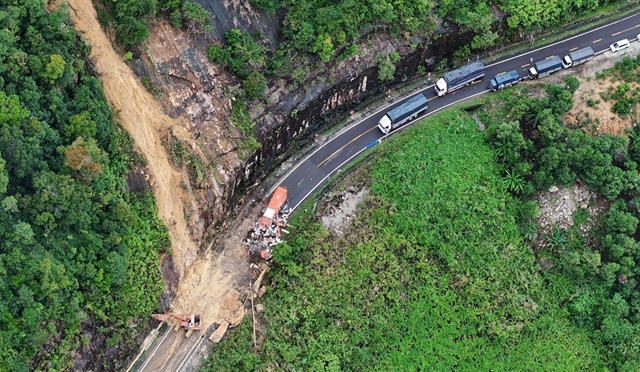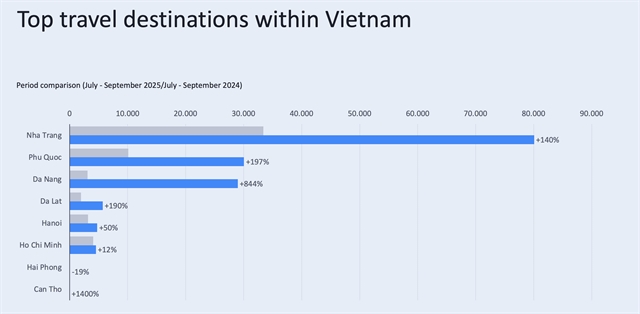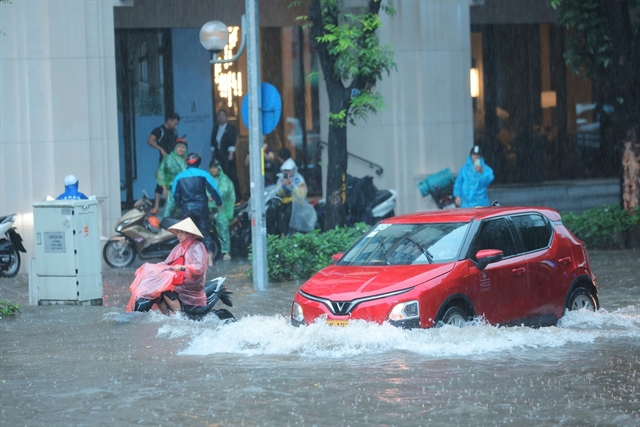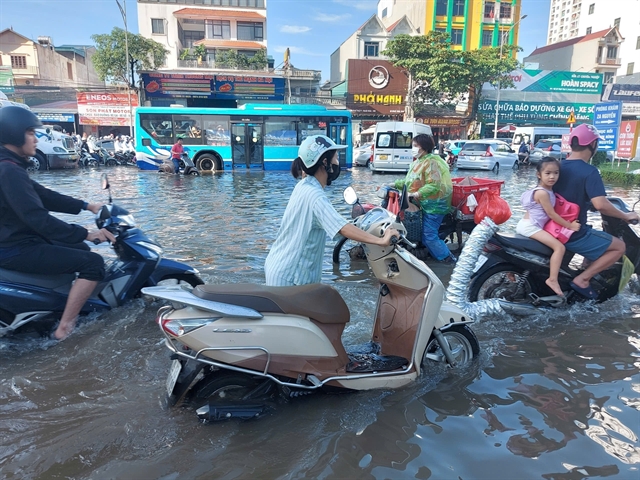 Environment
Environment


|
| Hanoians struggles to drive through an inundated section of a local road on Tuesday afternoon.—VNA/VNS Photo Hoàng Hiếu |
HÀ NỘI — Following the chaotic floodings caused by torrential downpour as a result of powerful Typhoon Bualoi, which paralysed life across Hà Nội on Tuesday, the city’s Department of Construction issued a public apology on Wednesday, expressing regret for the situation and appealing for residents’ understanding.
Speaking on behalf of the department, Lê Văn Du, Head of the Urban Water Supply and Drainage Infrastructure Management Division, accepted responsibility and voiced sympathy for the disruption and hardship people endured.
Du stressed that the prolonged, heavy rainfall was an “uncontrollable natural event” that severely impacted daily life in the capital.
According to the department, the main reason many streets were submerged was that the rainfall far exceeded the capacity of the drainage system, which is designed to handle a maximum intensity of 310mm over two days.
On Tuesday, many areas recorded exceptional levels such as Ô Chợ Dừa measured 527.2mm (170 per cent above system capacity), while Hai Bà Trưng saw 407.7mm (131.5 per cent above capacity) (both inner urban areas).
With drainage networks overwhelmed, rainwater could not be discharged in time and instead surged onto road surfaces, accumulating in low-lying areas and causing severe flooding.
Beyond the extreme weather, the department candidly admitted shortcomings in infrastructure.
“Hà Nội’s drainage system remains incomplete and lacks synchronisation; many key works and planned retention lakes have faced delays.”
The problem is particularly acute in newly built urban areas, where drainage infrastructure is often not properly linked to the wider city network.
In some developments, ground levels are lower than surrounding areas, allowing water to rapidly converge during heavy rains and creating serious localised flooding.
The situation is compounded by delays in constructing planned pumping stations and discharge outlets.

|
| By October 2, some areas in Hà Nội City are still waterlogged from the severe flooding on September 30. — VNA/VNS Photo |
Response
Faced with heavy rainfall forests, the department said it had already activated contingency plans from September 27.
Drainage operators were instructed to lower water levels in lakes and reservoirs to create additional storage capacity.
More than 2,479 personnel and over 500 machines and pumps were mobilised on standby.
The department also worked with the Departments of Agriculture and Environment to reduce water levels in rivers, canals and irrigation lakes to facilitate drainage.
To address the aftermath, Du said teams were deployed around the clock, with equipment concentrated in heavily flooded locations.
All existing drainage facilities were run at maximum capacity, with priority given to channelling water from the Tô Lịch River basin to Yên Sở Pumping Station through the regulating gates of Yên Sở Lake.
For longer-term solutions, the department of construction has proposed that the municipal People’s Committee develop projects to address localised flooding, including underground water tanks beneath public land, parks and gardens, combined with step-up pumping stations to enhance drainage.
In addition, as part of the Capital’s Ground Level and Drainage Master Plan to 2045, a vision towards 2065, the department will incorporate climate change scenarios, particularly rainfall events exceeding the current 310mm/2-day design threshold, to strengthen the city’s resilience against future extreme weather. — VNS